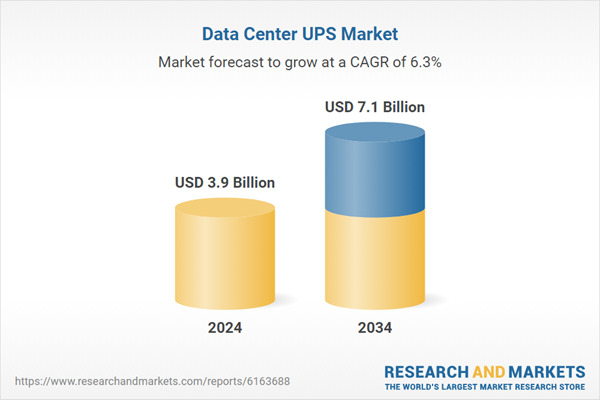However, volatility in the pricing of core materials like aluminum, copper, and lead poses cost-related challenges that particularly impact small-scale manufacturers. These fluctuations directly affect the procurement and production budgets, making it difficult for smaller vendors to maintain stable profit margins or compete with large-scale players who benefit from bulk purchasing and long-term supplier contracts. Sudden spikes in raw material costs can lead to delays in production, pricing instability, and lower inventory turnover. As a result, many smaller manufacturers face tighter working capital cycles and are often forced to reduce operational efficiencies or scale back on innovation.
The solution segment held 60% share in 2022, led by increasing adoption of highly efficient and reliable UPS technologies. These advanced systems are engineered for energy savings and include intelligent power optimization features, eco-mode settings, and components designed for minimal energy loss. Organizations continue to integrate such systems to not only reduce operating expenses but also support their broader carbon reduction strategies. These UPS solutions help minimize overall electricity consumption while ensuring maximum uptime for data center environments.
North America Data Center UPS Market held 35% share in 2022 and is projected to grow at a strong pace through 2032. The expansion of cloud computing infrastructure combined with significant growth in the telecom and IT services space is reinforcing regional demand. Innovation continues to shape the North American market landscape as regional companies are focused on product development and technological advancements. With active R&D and frequent solution upgrades, players are shaping the future of UPS infrastructure across enterprise and hyperscale data environments.
Leading contributors in the industry include Huawei Technologies Co., Ltd., Schneider Electric SE, Eaton Corporation, Mitsubishi Electric Corporation, ABB Ltd., Delta Electronics Inc., Vertiv Group Corp., and Legrand. Key manufacturers are enhancing product portfolios with high-efficiency and modular UPS systems that offer scalability and reduced TCO (total cost of ownership). To meet the dynamic needs of cloud and hyperscale environments, vendors are introducing lithium-ion battery technologies and AI-driven UPS systems for predictive maintenance and real-time analytics. Strategic collaborations with data center operators, cloud service providers, and infrastructure firms are helping major players secure long-term contracts and expand their global presence. Continuous investments in R&D, coupled with efforts to meet sustainability targets, are also driving product innovations and positioning companies for competitive advantage.
This product will be delivered within 2-4 business days.
Table of Contents
Companies Mentioned
The companies profiled in this Data Center UPS market report include:- ABB
- Eaton
- Emerson Electric
- Schneider Electric
- Vertiv Holdings
- AEG Power Solutions
- CyberPower Systems
- Delta Electronics
- Gamatronic
- Huawei Technologies
- Legrand
- Mitsubishi Electric
- Riello UPS
- Socomec
- Technology and innovation leaders
- Toshiba
- Bloom Energy
- Caterpillar
- Falcon Electric
- KSTAR Science & Technology
- Rolls-Royce Power Systems
Table Information
| Report Attribute | Details |
|---|---|
| No. of Pages | 240 |
| Published | July 2025 |
| Forecast Period | 2024 - 2034 |
| Estimated Market Value ( USD | $ 3.9 Billion |
| Forecasted Market Value ( USD | $ 7.1 Billion |
| Compound Annual Growth Rate | 6.3% |
| Regions Covered | Global |
| No. of Companies Mentioned | 22 |









